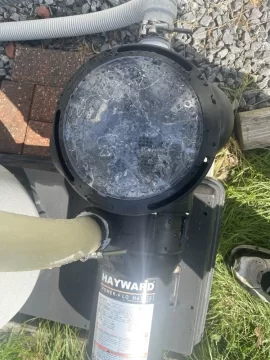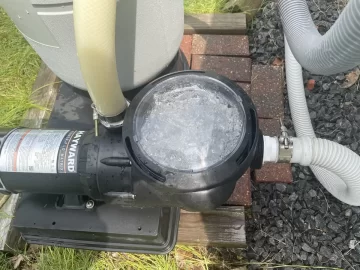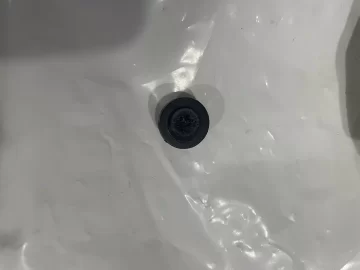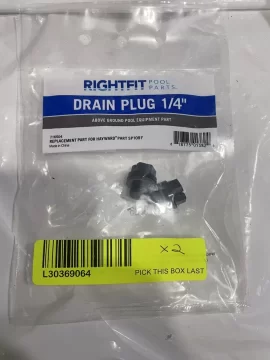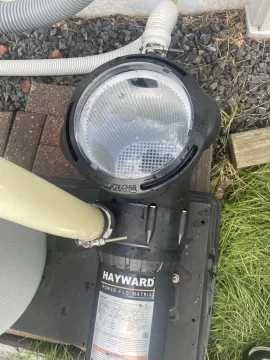Thanks for the advice, guys! I called the pool company and spoke with the head salesman, who said he'd actually open now. He said the little bit extra I spend in electricity and chemical for opening early, will be less than the expense and time involved in getting a green pool clear again, by waiting too long. He argued that with the water and weather so cool right now, actual chemical usage will be extremely low, and I can just set the variable speed pump at a very low rate to minimize electric usage.
This advice may have been swayed by the fact that we
had four straight days of 80F highs in our forecast next week, at the time we spoke, which is extraordinarily warm for us. Of course, in our usual fashion, that forecast has already been changed very substantially, down to 3 days at 70 - 75F.
Some answers on the other comments:
You have a heatpump, so I'd experiment with when the heat pump can maintain a decent pool temperature (limited or not by how much kWhs you are willing to pay for depending on whether that's a factor in the decision).
The heatpump is undersized, IMO. I like to keep the pool around 85-87F, and this heat pump can't even maintain that in mid-summer, with our typical overnight lows around 55F - 65F, unless I cover the pool every night. On the plus side, forcing me to actually cover the pool every night is probably saving me a boat load of money on heating costs.
I experimented a little with a chemical called "Cover Free" last year, an evaporation inhibitor. It helps a bit, but I usually keep the variable speed pump running low all night, which probably impacts its ability to settle on the surface and do its thing. More experimentation necessary, if I really want to use this instead of a cover.
That depends on whether you cover the pool at nights; no need for insulating covers, as evaporating water is the largest heat loss from a pool.
My plan is to get the pool opened, and then throw the solar cover on it. I'll leave the heat pump turned off, at least until it's warm enough outside that people actually want to use the pool. The early opening is all about avoiding the green swamp water, and testing out some of my new plumbing mod's early, not about using it early.
(And I'm surprised you have lows above 70 for only three weeks...)
Actually, it's worse than that. I just checked our climate data, and even through July our average lows are only mid-60's:
Month / Ave. Low
June / 60F
July / 65F
August / 64F
We don’t schedule it. We get the chemistry right usually the beginning of April and the kids end up “falling in” some time way before that he grownups think it’s warm enough
Yep, that's our plan. But we have to get a very dirty cover off, first. Not the mesh type on anchors, but a tarp type that has a bead lock under the coping. It hold water, leaves, lilly pads, algea... a real mess. Any advice?
We get over 85 by August. If we had a heat pump we’d be running it in cooling mode.
We can get there with the heater and/or solar cover on, but without we'd hold mid-70's all summer. It's just not that warm, here.
to bad your not getting the advise you need. it all depends on the individual. keep the bubble cover on it. it will keep the evaporation down to decent levels until it gets above 85 pool water degrees then take it off and leave it off or it will be to warm.
I bought our solar cover around Aug.1 last year, installing it each evening after the kids were done, and leaving it on probably until early afternoon the next day. I'd guess it was installed maybe 16 hours per day, and we never got above the high-80F's. I suspect that July could push us into the 90F's, if I keep the cover installed during the heat of the day, but that's not our goal.
One related question: If we go on a summer vacation, I think it best to leave solar cover off? Figuring it'd be better to have the pool temp go too cool than too hot, in terms of chemical stability. Managing the chlorinator levels with the cover on is a bit of a thing, since it always wants to overshoot, due to lack of UV exposure and evaporation.
oh and the chlorine won't dissolve if the ph is not in the right spot. keep the ph where it's supposed to be and the chlorine and if you need to put other chemicals in it will be minimal. everytime i would put chemicals in i needed more chemicals. as long as i keeped up on the ph and chlorine i was good and the water was crystal clear. i would shock it when a lot of people were in it at the same time or it started to look like it needed it.
Interesting. We've been running the Frog Leap system, which allows chlorine to stay at just 0.5 - 2.0 ppm, versus a standard chlorine system at 2.0 - 4.0 ppm. I actually had so much trouble keeping the chlorine that low last year, after installing the solar cover, that I would end up removing the chlorine pack for several days at a time. This year, I installed a proportional bypass valve around the sanitizer, so when the lowest setting is still over-chlorinating, I can partially or fully bypass it.
